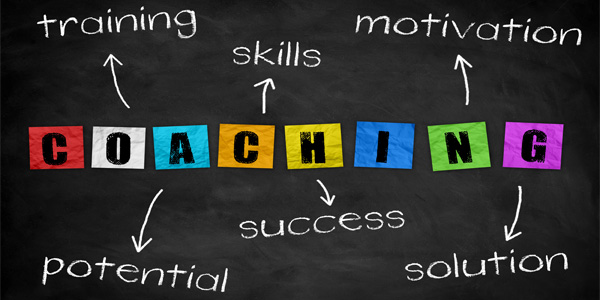Just like your favorite football team’s coach, as a leader you are the coach of your dealership, helping to drive them down the field to make the score. As head coach, your mission is to help each team member make good decisions, solve problems and learn new skills so that your dealership makes its goal on the lot and beyond.
But here’s the challenge: Most of us have never had formal training on how to coach and mentor. Most of us flub our way through it, learning how to coach on the job. To become a great mentor to your team, you need to arm yourself with proven techniques so that, while you are learning and growing as a coach, you are also growing your team.
Think of that football coach. No coach worth his or her salt ever just gathered the team in a room to run the plays on a chalkboard and then said, “OK, team — goodbye and good luck at the game!” A solid coach runs the plays, but then gets everyone on the practice field to provide opportunities for team members to learn new skills, make mistakes, fail (sometimes miserably) and hopefully learn through a continuous feedback loop. Sometimes the team wins and sometimes it doesn’t. It’s your job to help your team members grow and learn through each experience.
One useful technique you can employ to both grow as a coach and grow your team is called the GROW Model. GROW stands for:
• Goal
• Current Reality
• Options or Obstacles
• Will or the Way Forward
Originally designed by business coaches in the 1980s, the GROW Model provides a pathway for us to engage in continuous learning — the process never stops. We can all GROW.
Your first objective with the GROW Model is to work with each team member to choose a goal or set of goals they desire to achieve that aligns with the organization’s core goals. It’s important that each goal chosen is a SMART Goal, which simply means that each goal is Specific, Measurable, Attainable, Realistic and Time-bound.
When identifying goals, it’s useful to ask questions like:
- How will he know when your goal has been achieved, or how will she know that the problem or issue is solved?
- Does this goal fit with her overall career objectives?
- Does this goal fit with the team’s objectives?
Next, as coach, you need to let the individual contemplate their current reality. Where is this person on the learning curve toward reaching his or her goal? Allow your team member to start talking it through with you as a sounding board. Contemplate questions such as: What is happening now and how often? What isn’t working and what is? For instance, maybe the team member isn’t good at really listening to a customer’s specific needs or is too aggressive, as evidenced by negative feedback the dealership received through social media. Perhaps the individual is inadvertently chasing potential customers off your lot and needs to correct this specific behavior or he or she will continue to flounder as a representative of your organization.
Now you have identified the goal (in this case, a happy customer as evidenced by the purchase of a vehicle) and the current reality (customers are offended and chased off the lot) In this case, the goal is to learn to serve the customer first through active listening and then provide the customer with appropriate options that meet his or her specific needs, resulting in a happy and satisfied customer. Next, it’s time to identify the specific skills the team member will need to acquire to become an active listener. Together, you can brainstorm a host of options and decide which are the best ones. For instance, you may have a star team member with a proven track record who can model how he or she approaches active listening with customers. Pair these team members up and then follow up to see what the individual learned from the experience. What behaviors can he or she adopt and practice that feel authentic and useful given his or her personality and style?
As coach, you need to listen to your team member and let him or her generate ideas first. Then you can offer suggestions and guidance, but it’s way more productive to let the individual in need of development to ponder the following questions and generate answers he or she believes will work for him or her:
- What else could you do?
- What if this or that constraint was removed? Would that change things?
- What are the advantages and disadvantages of each option?
- What factors or considerations will you use to weigh the options?
- What do you need to stop doing in order to achieve this goal?
- What obstacles stand in your way?
Finally, we need to establish the individual’s will and desire to recognize there is a problem that can be resolved through learning and application of new skills. Ultimately, as coach, you need a commitment that the team member will take action to correct a behavior and adopt new behaviors in order to reach clearly articulated and agreed upon goals.
Useful questions to ask here include:
- So, what will you do now, and when? What else will you do?
- What could stop you moving forward? How will you overcome this?
- How can you keep yourself motivated?
- When do you need to review progress? Daily, weekly, monthly?
Decide together when you will meet back up to review progress, and really think about how you, as coach, will provide further assistance and mentorship to assist in the process of moving that individual from one end of the learning continuum to clear improvement. Again, it’s a process that will require vigilance and patience on your part. You need to ask yourself about your will to persevere. If you don’t possess the skill-set or know-how to teach it, then you need to find someone who does.
And finally, “walk the walk” before you “talk the talk.” It’s tough to admit you have room for improvement. Speak openly about goals you have defined for yourself and what barriers you have to overcome to reach your goals. Discuss how you are working to adopt new skills and behaviors and that you welcome the team’s feedback and encouragement as you GROW through the process. When you and your team members reach their goals or are making significant progress, celebrate like crazy! I like to say that anything worth doing is darn hard to do, but always worth it in endgame.














